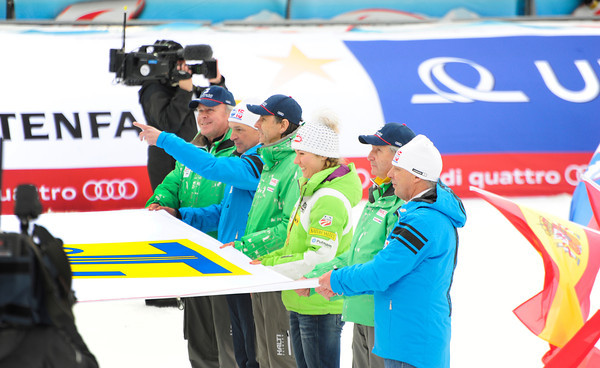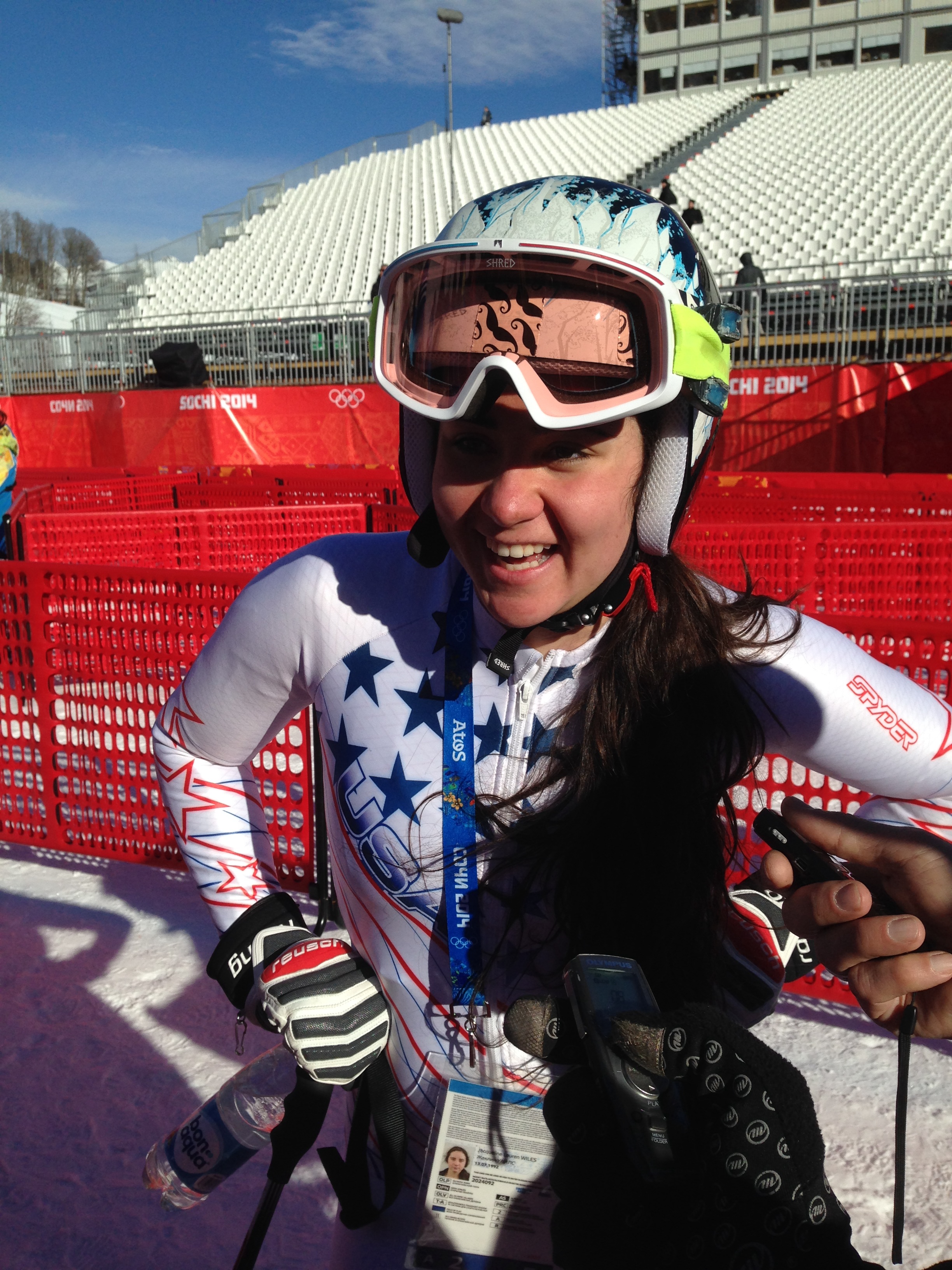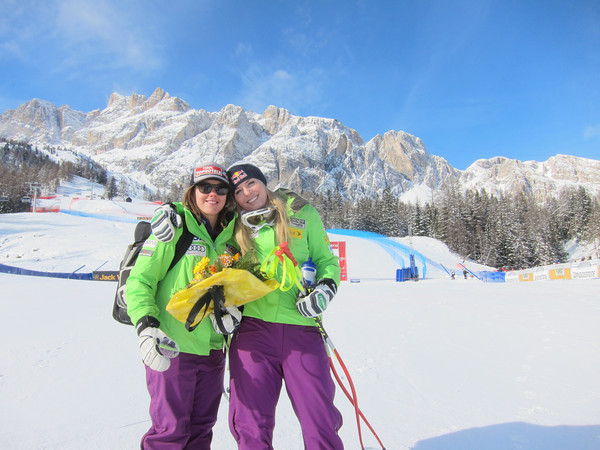There once was a time when the Europeans scoffed at the U.S. Ski Team.
The Americans have the icy low hills back east and the amazing Rocky Mountains, Sierras and Cascades out west, and yet every winter the Americans would roll into the World Cup tour and maybe there would be the occasional breakthrough -- Phil and Steve Mahre in the 1980s, for instance -- but not the sort of consistent, across-the-board dimension that would make the Euros, the Austrians in particular, snap to and say, whoa, the Americans are so for real.
Ladies and gentlemen, that time is now.
Know, too, that the 2014 Sochi Olympics could well be the U.S. Ski Team's moment in the sun, testament to the culture behind its claim to be "best in the world."
Once, that notion seemed so audacious as to be absurd.
Now -- well, at the 2013 alpine world championships, which wrapped up Sunday in Schladming, Austria, the U.S. won more gold medals -- four -- than any other nation.
Ted Ligety won three gold medals, the super-G, super-combined and then his specialty, the giant slalom. Teen Mikaela Shiffrin won the slalom. Julia Mancuso, as ever a big-game racer, took bronze in the super-G.

The U.S. team's performance came even though Lindsey Vonn -- the Vancouver 2010 downhill winner and indisputably the best female skier the United States has ever produced, with four World Cup season titles and 59 World Cup wins -- tore a knee apart in the very first event, the super-G. She has vowed to be back for Sochi.
Further, Bode Miller -- before Ligety, no question the best American male skier of all time -- is taking the year off to give a knee time to heal. Nolan Kasper, who probably would have been a medal contender in the slalom, crashed in December and is out, too.
There are many, many reasons the U.S. team has risen to the top.
Among them: sponsor support; cutting-edge scientific and training methods; the opening of an early-season speed-racing training base in Copper Mountain, Colo.; a winter-time training base in Sölden, Austria, to reduce back-and-forth travel across the Atlantic; summer training in Portillo, Chile, and down under in New Zealand.
It all goes back, however, to culture -- the idea that the Americans not only can but should win and, moreover, that they're all in it together.
This is the notion behind the 85,000-square foot Center for Excellence, the ski team's headquarters in Park City, Utah, that doubles as world-class training center. It's not just the alpine team that works out there. The cross-country team, the freestylers, the Nordic combiners, the guys, the women, the teenagers, the athletes in their 20s and 30s -- everyone.
That was the idea when the place opened in 2009 -- it was where the U.S. Ski Team, all together and altogether, would work out. It's how culture happens.
Skiing is an individual sport. And yet the U.S. Ski Team has bridged the gap. It is, indeed, a team.
You see it now in small but utterly revealing ways.
After her divorce, Vonn found a welcoming home with the women on the U.S. team. There were hugs all around in a conference room in Lake Louise, Canada, when she said, simply, "I want to be your teammate," and from then on -- that's the way it has been.
Last month, the U.S. women were talking -- with admiration -- about Chip White, for 17 years a U.S. team coach, now in charge of the speed team (events such as the downhill).
"If we miss a day of skiing, he is so bummed," Leanne Smith said. "He is just sad and inconsolable and feels like it's his fault. He cares so much. He knows all of us at a personal level and wants to see us to what we are all capable of."
Vonn -- this was before her injury, obviously -- said, "He cut his finger off," with a table saw last fall, "and he was still out on the mountain. He had one hand all taped up and he was still carrying gates around and wrenching in gates and working just as hard as he always does, even though he was in excruciating pain."
Shiffrin and Vonn are now known to paint their fingernails together. Shiffrin is 17, Vonn 28. Vonn was one of Shiffrin's childhood heroes.
Ligety is also 28. It would be so easy for there to be a do-not-cross sign between the men's and women's teams, which travel all winter on different circuits. Instead, here was Shiffrin after her victory Saturday, underscoring the connection:
"Ted was so inspiring these world championships. It's really hard to have a good race every few days and that's what he's done. You get tired and you're trying to extend your mental capacity for an entire two weeks. He seems to have done it flawlessly."
The U.S. Ski Team is, of course, more -- way more -- than just the alpine team.
Even as the posters came down and the bags got packed in Schladming, consider what else was going on that was relegated to the back pages, if that, of America's newspapers -- the stuff that come next February will become front-page news at the Olympics:
At a test event in Sochi, American halfpipe freeskiers Torin Yater-Wallace and Gus Kenworthy went one-two. Seven of the 12 finalists: American.
Also in Sochi, Hannah Kearney -- the 2010 Vancouver champion -- won in moguls with Eliza Outtrim second; Heather McPhie took fourth on a tiebreaker. Six U.S. women made the round-of-16 semifinals. On the men's side, Patrick Deneen took second.
In Davos, Switzerland, at a cross-country World Cup sprint, the final tune-up before the Nordic world championships this week in Val di Fiemme, Italy, five Americans -- three women and two men -- qualified into the heats, with Andy Newell taking his best finish in three seasons, fourth in a classic sprint. He now stands second in the World Cup sprint standings. Kikkan Randall leads the women's sprint standings.
At another World Cup tune-up Sunday before the Nordic worlds, this one at Ljubno, Slovenia, American women ski jumpers finished third, fifth and seventh. Japan's Sara Takanashi won the event and clinched the World Cup title.
Does all this guarantee anything next February in Sochi? No.
Does it, however, mean things are headed in the right direction? For sure.
The U.S. Ski Team won 21 of 37 American medals in Vancouver. In 2010 there were 24 medal opportunities in snowboard and freeskiing; in Sochi, that number will be 48. It's easy to see: the action in Sochi figures to be up in the mountains.
"We had great success in Vancouver and we worked really hard to position ourselves to use that success and that platform to continue to push for another really successful Olympics," Bill Marolt, the president and chief executive officer since 1996 of the U.S. Ski and Snowboard Assn., said in a telephone call from Sochi.
"The momentum we are seeing this year is going to be really motivating. The success will focus the athletes and the coaches and I think we'll get a really good effort next summer, with a lot of really good hard work. I think it will go up a notch from what we've done. We'll go in fully prepared, with no stones unturned, and see where we are where it's over."
















